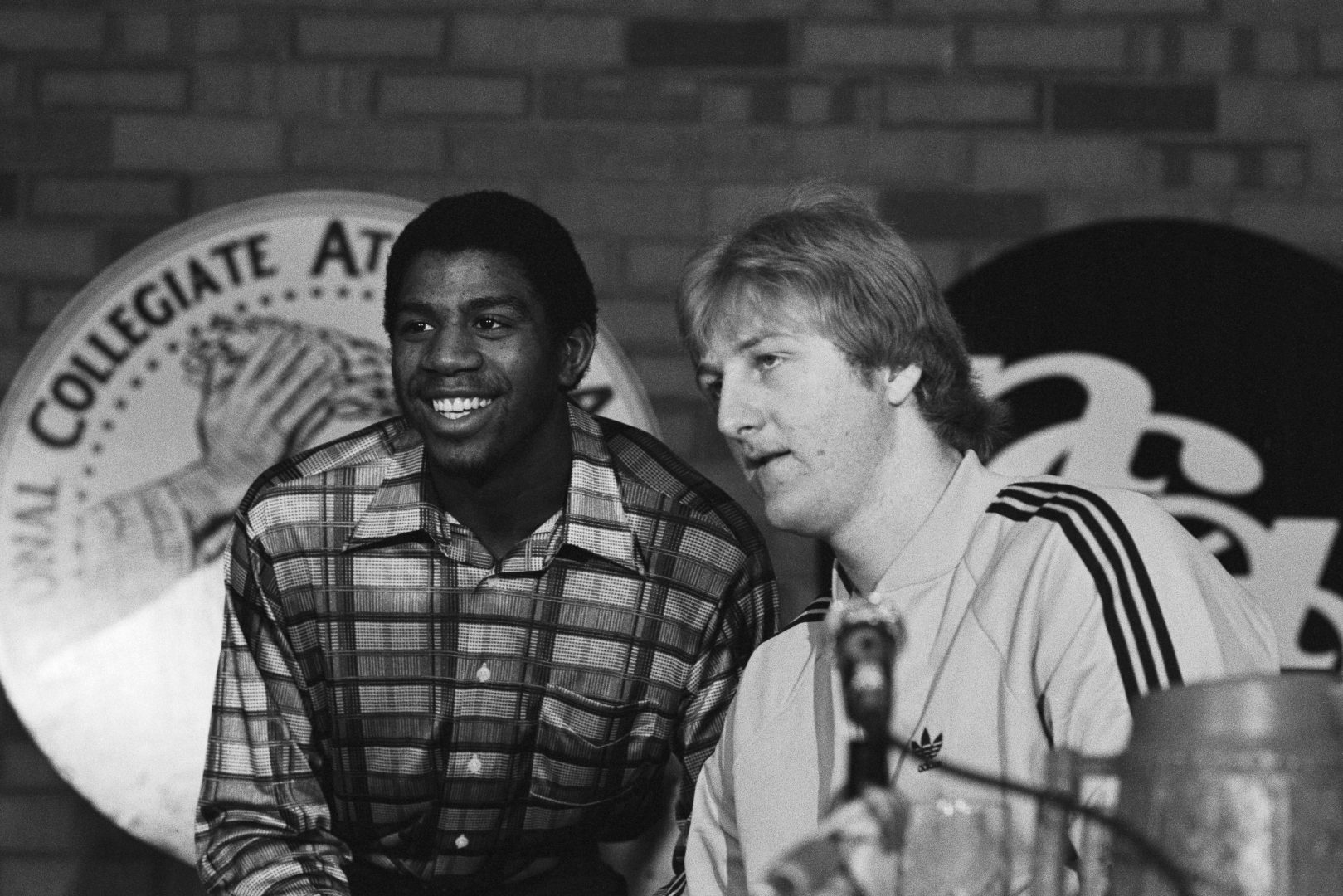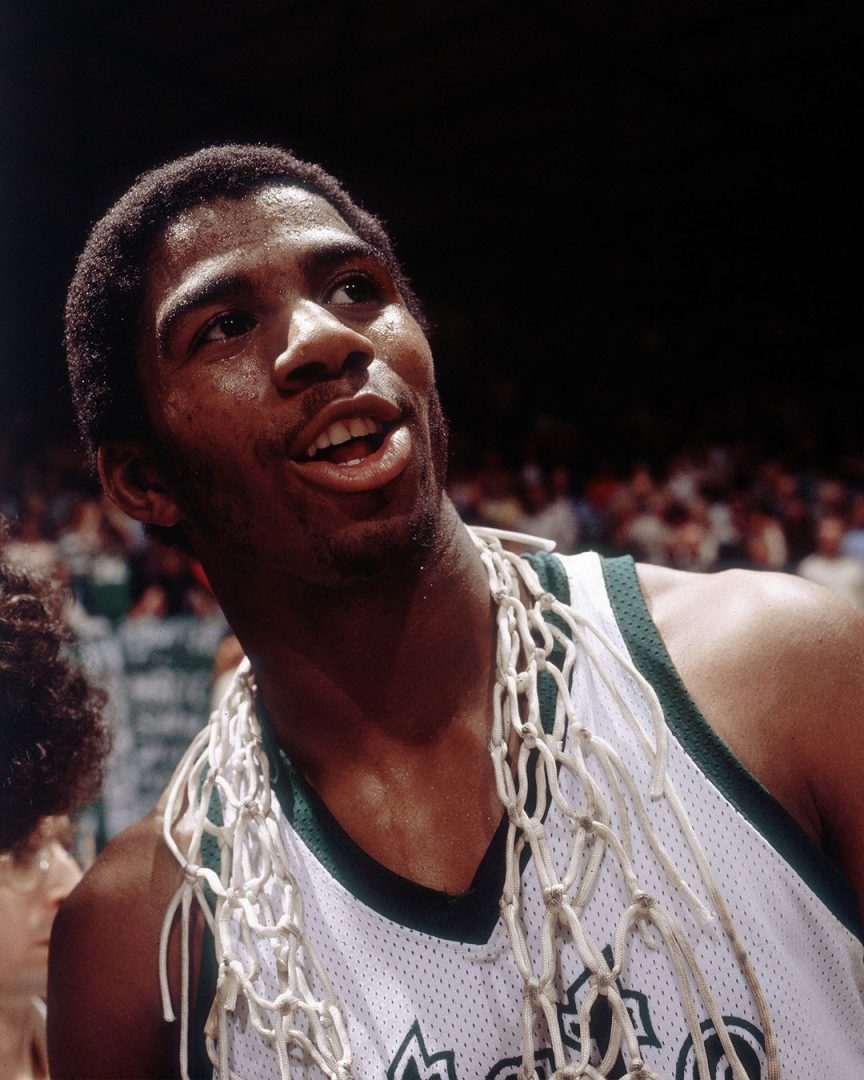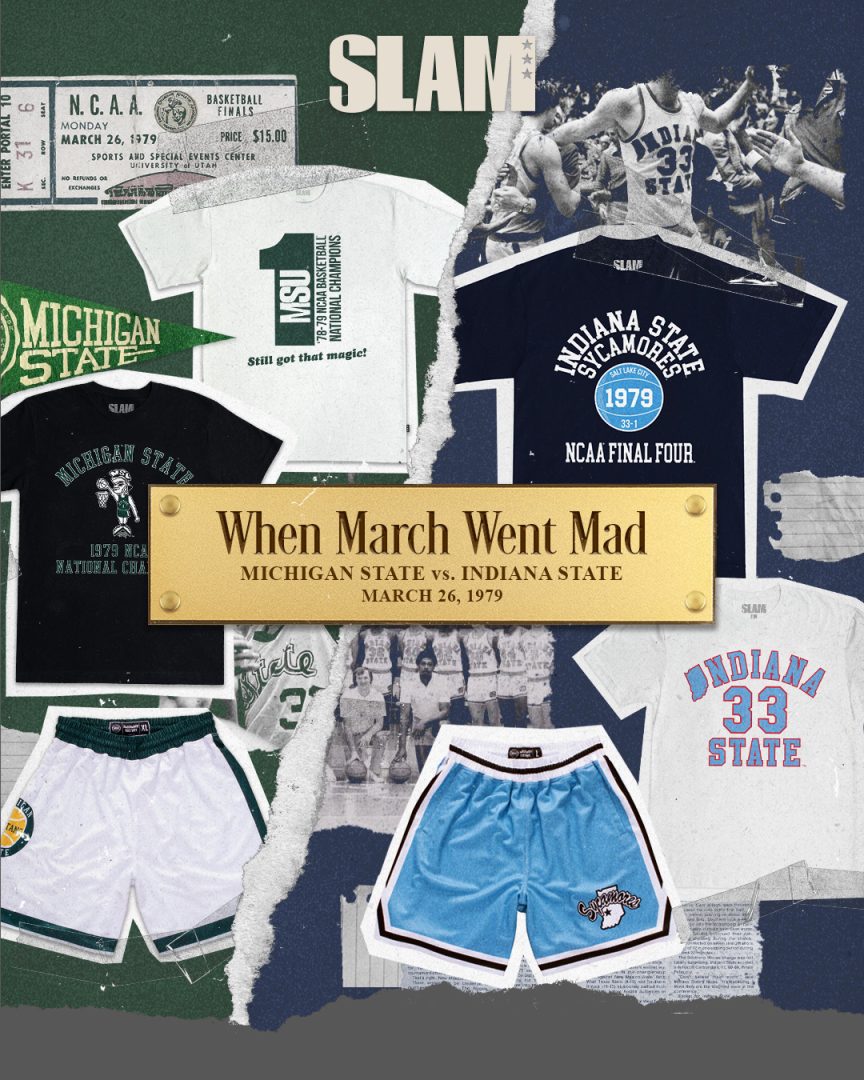When March Went Mad: Looking Back at the Legendary Matchup Between Larry Bird and Magic Johnson
In honor of March Madness, we’re detailing the most impactful college games of all-time. The legend of Larry Bird and Magic Johnson’s matchup in the 1979 National Championship still lives on. Tap into the nostalgia with our latest collection, “When March Went Mad”, which is available now. Shop here.
Bird vs. Magic. Larry vs. Earvin. The Hick from French Lick vs. Buck. A folk hero vs. a showman. No matter which way you slice it, there’s only ever been one matchup that built college basketball into the living, breathing sensation it is today. The historic rivalry between Larry Bird and Earvin “Magic” Johnson has been referenced ad nauseam. The Finals appearances, the championships, the rings; their legends were first intertwined on that one fateful night, March 26, 1979, when college basketball sprouted from a simple pastime on tape delay into a gargantuan titan.
The two were polar opposites. Bird despised any and all attention from the media; Magic welcomed it. Bird was methodical; Magic put on a show. One was a forward who could pass and shoot like a guard. The other was a guard the size of a forward dishing out no-look dimes in transition. The arrival of two superstars who went decidedly against the grain of the game’s positional rigidity served as the catalysts for the evolution of college basketball.

Behind the immaculate play of senior forward Larry Bird and a supporting cast featuring Carl Nicks, Alex Gilbert and Bob Heaton, Indiana State University had achieved their first-ever postseason appearance. With season averages of 28.6 points, 14.9 rebounds and 5.5 assists per game, No. 33 would lead the Sycamores to topple No. 8 Virginia Tech, No. 5 Oklahoma, No. 2 Arkansas and No. 2 DePaul in March.
Bird’s star had been rising in Terre Haute for years, deciding to forgo his selection in the 1978 Draft for his final year of college eligibility. The latter would institute a massive shift in attention toward the Hoosier State and ISU’s bright baby blue threads. Winning 33 straight that season helped a bit, too.
A 35-piece in the Final Four from the collegiate Player of the Year, on 16-19 shooting, would send ISU to its first NCAA Championship game against the Michigan State Spartans and a dime-dropping 6-8 point-forward from the factory side of Lansing, MI.


The Spartans hadn’t fared as well leading up to March, losing four of their six contests in January. Yet the smile, humor and larger than life personality of Magic Johnson refused to let the team dwell on missed opportunities. Greg Kelser, Jay Vincent, Ron Charles and Co. responded in kind.
After averaging 17.1 points, 8.4 dimes and 7.3 boards throughout the season, Magic’s Spartans (25-6) would knock off No. 3 LSU, No. 1 Notre Dame and No. 9 Penn for the collegiate showdown of the century.
Formerly known as the Special Events Center at the University of Utah, now the Huntsman Center, the Sycamores and Spartans would meet for the first time in the history of their respective programs. Looking back 45 years later, the true essence of the game didn’t lie on the court, but rather in the grandeur of the moment. In a post-John Wooden era, two stars injected the college game with a level of anticipation that even the release of Avengers Endgame couldn’t match.
After leading by nine at half with Dick Enberg on the call, Michigan State refused to look back, trouncing Indiana State 75-64 and capturing the program’s first NCAA Championship. Despite leading the tournament in points and rebounds, Larry Legend was uncharacteristic in his final collegiate game, going 7-21 from the field with 19 points and 13 boards. Meanwhile, Magic Johnson put on yet another historic March performance. The tournament’s Most Outstanding Player poured in a game-high 24 points with 7 rebounds and 5 assists.
The sheer impact of that 1979 championship game hasn’t been replicated. And it probably never will. All these years later, college basketball still hasn’t seen a game draw anywhere near the level of audience it did in the late ’70s, equaling a 24.1 overall viewer rating. For the non-stat historians, that equates to roughly two out of five television viewers tuning into the game.
The hype wasn’t just felt in family rooms across America. Shockwaves from the historic matchup were simultaneously sent throughout the nation’s broadcast boardrooms. It was time to fully capitalize on college basketball. Magic and Bird had cemented it, so much so that CBS eventually made the push to completely overtake the tournament’s television rights in 1982. Bird and Magic were the only justification they’d need. College basketball deserved the primetime spotlight.
TV deals skyrocketed and the playing field was opened from 40 to 64 total teams. March Madness had been born. Before the 24-hour news cycle and the dedicated Selection Sunday special, Bird and Magic had successfully propelled the game to unseen heights. In just a few years, the arrival and obsession with “superstars” in the NBA would catapult the L into unequivocal success. And who would be credited with that impact? Bird and Magic.

Photos via Getty Images